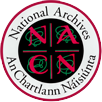 The process of creating a digital collection such as The letters of 1916, takes many people with many skills and expertise. This is the first blog post that describes one piece of the workflow from sourcing an analogue document to creating a digital surrogate.
The process of creating a digital collection such as The letters of 1916, takes many people with many skills and expertise. This is the first blog post that describes one piece of the workflow from sourcing an analogue document to creating a digital surrogate.
The letters of 1916 has been blessed with the National Archives of Ireland (NAI) as a project partner. During the summer of 2013, when I was approaching Dublin-based institutions who had letters relevant to our collection area, I met with Catriona Crowe who immediately and enthusiastically embraced the project.
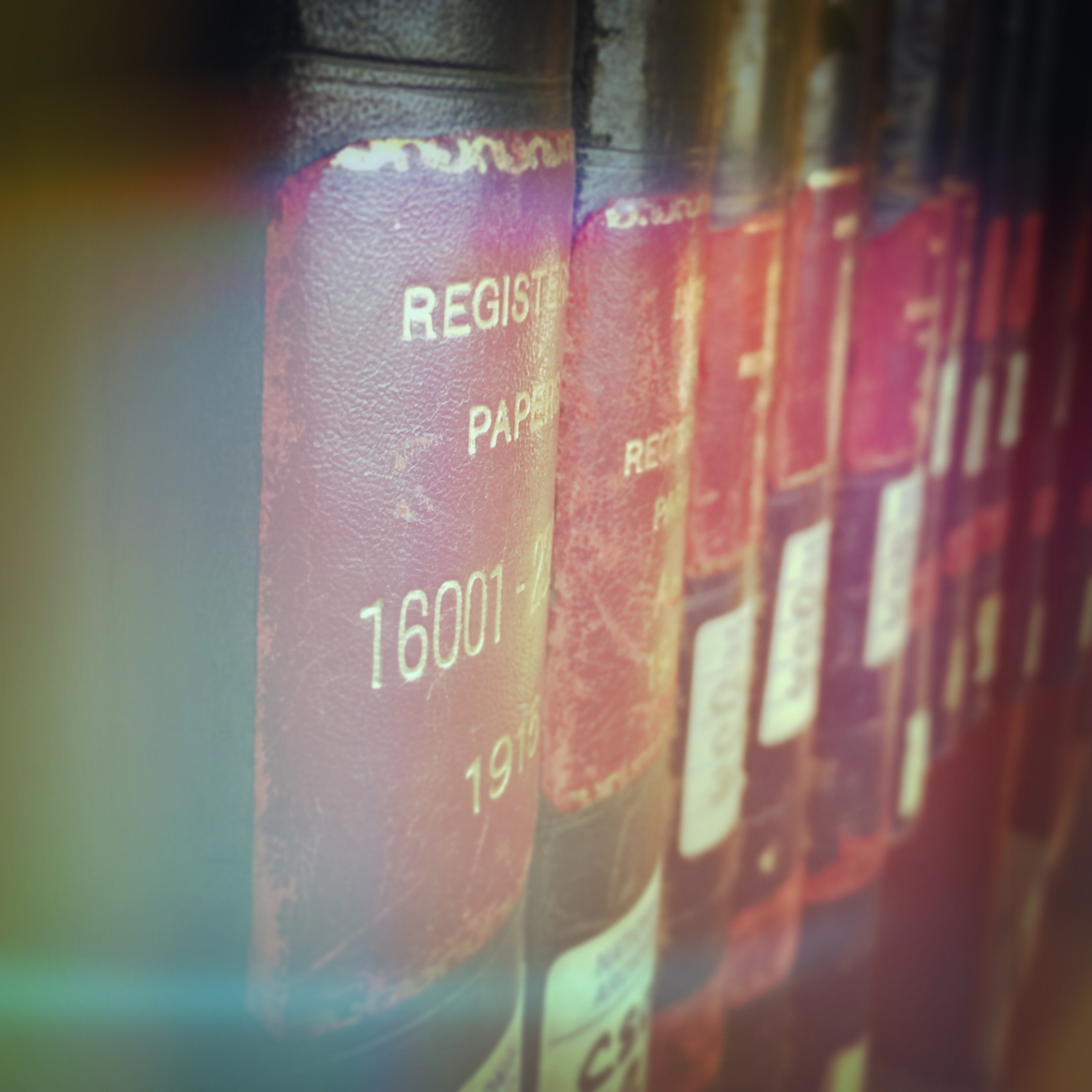
The Chief Secretary’s Office Registered Papers, basically the working documents of the British Administration in Ireland, were key to the events of this period. This was clearly the collection we should start with. Catriona took me into the stacks and we roughly counted the number of files of correspondence per box: 100. This meant we had in the region of some 5000 files from this collection alone. A formidable task. Thus far, the Letters of 1916 project team has made a small dent in digitising this collection, by and large available under the ‘Official Documents’ theme.
The vast majority of documents in the Chief Secretary’s Office Registered Papers for our collection period had yet to undergo conservation. Zoe Reid, the NAI’s Conservator, has been our partner on this aspect of the project. We agreed a workflow in which we identify all the letters in a box relevant to our collection year and tag them. The conservation team does their magic, and several weeks later we return to photograph them.
The Chief Secretary’s Office Registered Papers contains a wealth of information, providing in the first instance, a fascinating window on to the ordinary business of state. The correspondence after the Easter Rising, on the other hand, reveals not only the government’s reaction to the Easter Rising, but the many and varied responses from around the country. From the letter from the Director of the National Library of Ireland looking for copies of the Proclamation to be preserved for posterity, to the Chamber of Commerce in Dublin who unequivocally express solidarity with the Administration, while making it clear that there is an expectation that the government will offer some form of compensation for business owners whose premises were looted or destroyed.
Charlotte Anstis, a Conservation Intern at the NAI’s blog post below provides a wonderful glimpse on to the largely invisible work of conservators in ensuring our cultural heritage survives into the next century.
Susan Schreibman
Letters of 1916 Editor-in-Chief
Conserving 1916 Letters at the National Archives of Ireland
Charlotte Anstis, Conservation Intern
When a conservator looks at a collection of correspondence, they look for details and clues that offer insight into their condition. These range from observing the paper, identifying inks or stamps, seals or watermarks. These are clues that the conservator reads when assessing the need and choice of treatment.
Before even touching paper much can be observed: marks, stains, colour, creases, tears, sheen and pattern can suggest how fragile or robust it is likely to be. Smudging, fading, flaking and areas of loss concerning inks and seals can indicate what has happened to that document in the past and the conditions the material was previously stored in.
The conservator will ask themselves, what damage is present? What potential problems do I have to look out for? What solutions can I come up with? How the document is to be used and stored are also important factors when considering courses of action. A conservator will often take in as much of this type of information as possible before even looking at what is written!
As part of this exciting project, Trinity College Dublin and National University of Ireland Maynooth researchers in the Digital Humanities have been going through boxes of correspondence six months prior to and after the Easter Rising at the National Archives of Ireland. Letters of interest are selected for photography and identified using archival clips. Chosen material is then assessed and conserved as appropriate, enabling safe and good quality photography for this digital project. This is a large scale project here at the Archives with 50 boxes containing approximately 43,000 pages of correspondence of related material to be sorted through.
Treating the letters
The poor quality of 20th Century wood pulp paper often results in discolouration and brittleness over time due to acidity within the paper. It is particularly prone to damage (tears and loss) through handling. Letters that have been folded are especially weakened at the folds and are often torn. All letters selected for photography are surface cleaned. This means that any dirt on the paper’s surface is removed using a soft brush, smoke sponge and sometimes, a Mars- Steadtler eraser. Creases and folds are gently eased out through humidifying and flattening, which is particularly beneficial when revealing text obstructed by folds. Any tears are repaired with light weight tissue to provide support and prevent further damage. The majority of ink in this collection is extremely sensitive to water and some solvents, so great care is employed when humidifying letters and repairing tears.
Letter from the Chief Commissioner to the Department of Agriculture and Technical Instruction for Ireland, 6th May 1916.
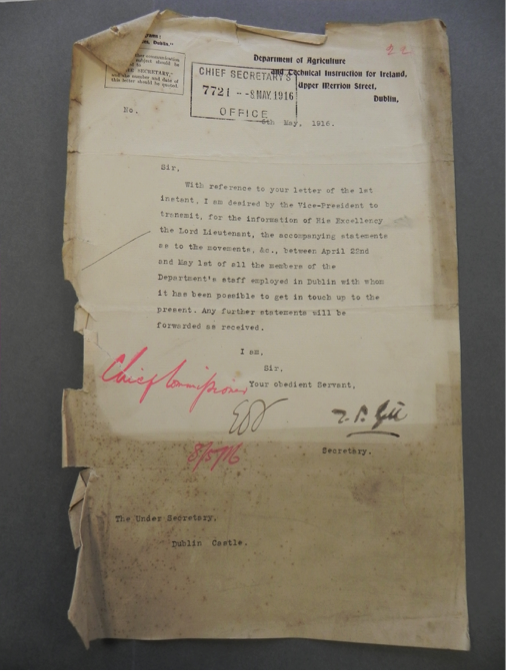
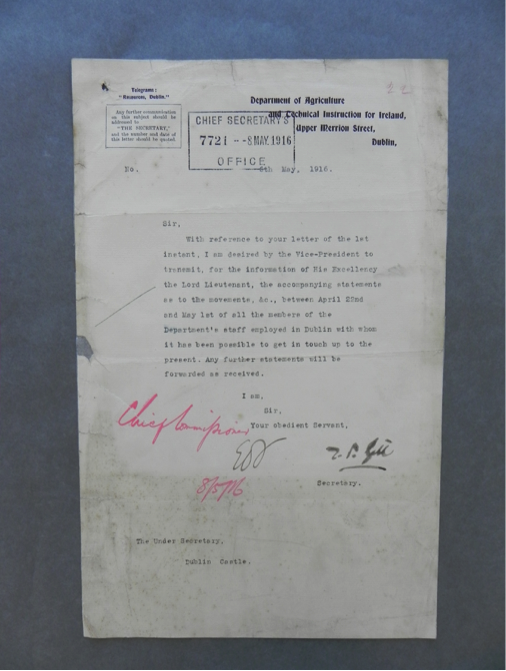
Letter from LBP, 3rd May 1916
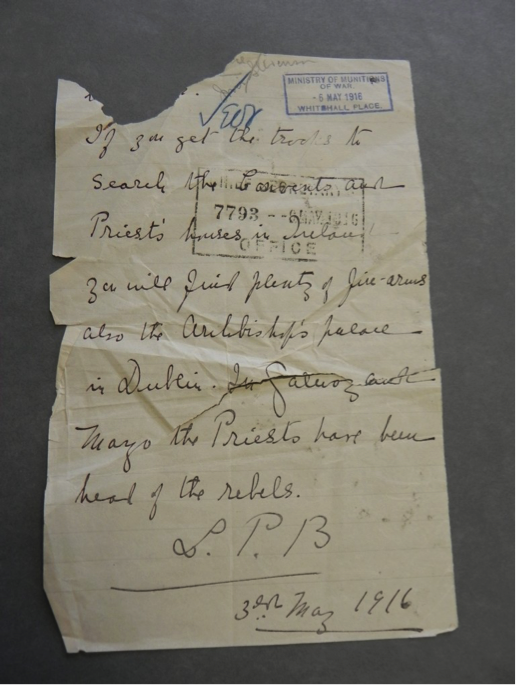
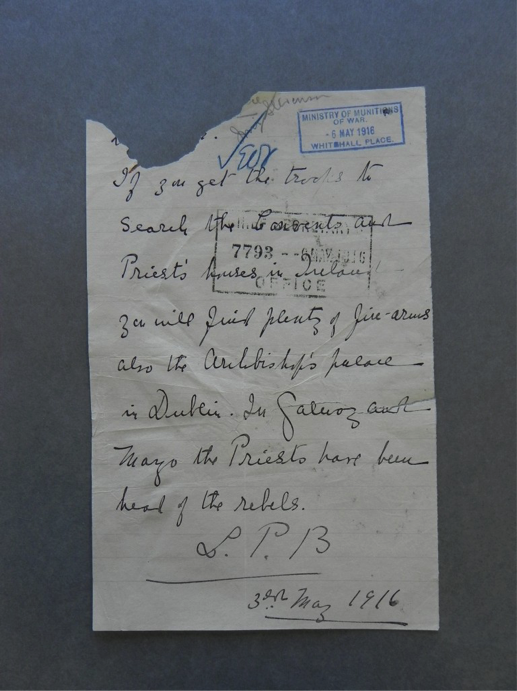
Surface cleaning, humidification and flattening has greatly improved the legibility of these letters. Tear repair has stabilised the paper making it safer to handle and more secure for the future.
It has been extremely rewarding to work on material for such an exciting project. Challenges that arose due to the sensitivity of this material, its format and sheer volume has required different treatment methods and allowed me to develop my problem-solving skills, which, for a conservation intern has been very beneficial. I am looking forward to treating the next box!